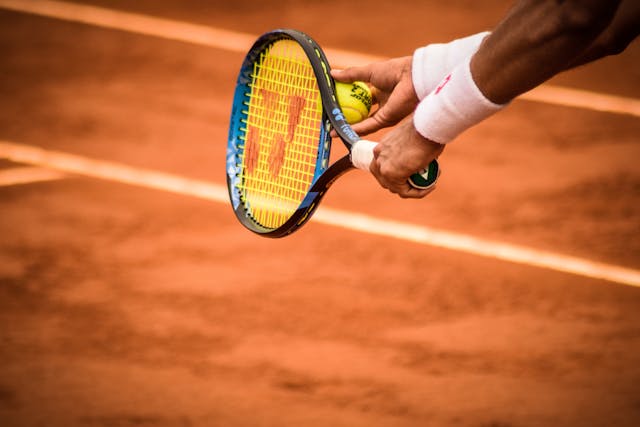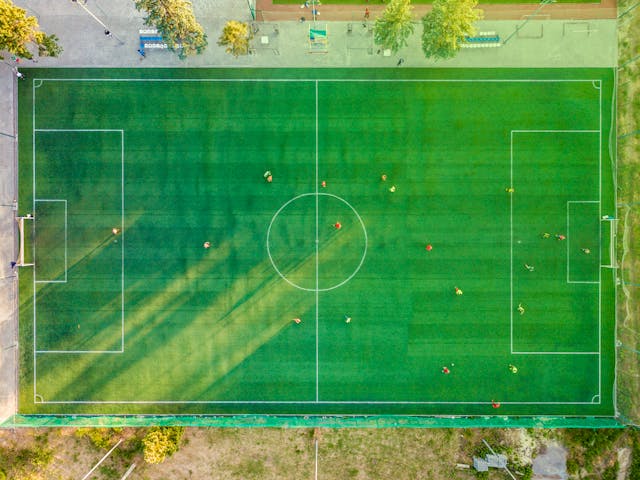Sports for All: Promoting Inclusivity and Diversity in Athletics
Sports have the unique ability to bring people together, create opportunities for personal growth, and foster a sense of belonging. However, for many, certain barriers can prevent full participation in athletic activities. These barriers can be related to race, gender, disability, socioeconomic status, or even cultural norms. Promoting inclusivity and diversity in athletics is crucial for ensuring that everyone has the opportunity to experience the many benefits sports have to offer. In this article, we explore why inclusivity in sports matters and how we can work towards a more diverse and equitable athletic world.

The Importance of Inclusivity in Sports
What Is Inclusivity in Sports?
Inclusivity in sports means creating an environment where everyone, regardless of their background, can participate and thrive. This involves providing equal access to facilities, opportunities, and support, ensuring that all individuals, no matter their ability or identity, feel welcome and valued.
Why It Matters
-
Personal Development: Sports can teach valuable life skills, such as teamwork, resilience, and discipline. Ensuring access to sports for all individuals allows everyone to benefit from these lessons.
-
Mental and Physical Health: Participation in sports can boost mental well-being, reduce stress, and improve physical health. When more people are included in sports, overall public health improves.
-
Social Change: Sports are a powerful platform for social change. By promoting inclusivity, we can challenge stereotypes, reduce prejudice, and build stronger, more cohesive communities.
Barriers to Inclusivity in Sports
While the benefits of inclusive sports are clear, there are still many barriers that prevent people from participating. These barriers can take many forms:
1. Accessibility Challenges for People with Disabilities
For individuals with physical or intellectual disabilities, participating in traditional sports can be difficult due to a lack of adapted equipment, specialized coaches, or accessible facilities. Many sports leagues or clubs do not offer inclusive programs, leaving people with disabilities without opportunities to compete or enjoy sports.
2. Gender and Cultural Barriers
Gender stereotypes and cultural norms can limit who gets to play certain sports. For example, women and girls may face societal pressure or lack of opportunities in traditionally male-dominated sports like football or rugby. Additionally, in some cultures, sports participation for women is restricted due to social expectations or religious beliefs.
3. Economic Barriers
The cost of participating in sports can be a major barrier, particularly for low-income families. Equipment, uniforms, travel expenses, and club fees can be prohibitively expensive, limiting opportunities for children and adults from marginalized communities.
4. Racial and Ethnic Barriers
In some cases, racial and ethnic minorities face discrimination or exclusion in sports. This could be in the form of biased attitudes, lack of representation in coaching roles, or limited access to facilities in certain communities.
Strategies for Promoting Inclusivity and Diversity
1. Adaptive Sports Programs
One key way to promote inclusivity is through adaptive sports programs. These are specialized programs designed for athletes with disabilities. Examples include wheelchair basketball, adaptive swimming, and visually impaired soccer. By supporting these initiatives and ensuring they are widely available, we can break down the barriers that prevent individuals with disabilities from participating in sports.
2. Creating Equal Opportunities for Women and Girls
Encouraging women and girls to participate in all types of sports is essential for promoting gender inclusivity. This can be achieved by:
-
Supporting girls' sports leagues.
-
Offering scholarships for female athletes.
-
Celebrating female athletes and providing visibility for their achievements.
-
Providing female athletes with equal access to resources and coaching opportunities.
3. Affordable and Accessible Sports Programs
To combat the economic barrier, many communities are working to offer affordable or even free sports programs. Public parks, recreation centers, and schools often provide opportunities to engage in sports without the financial burden. Furthermore, creating sports programs in low-income communities can help close the gap and ensure that everyone has access to the benefits of physical activity.
4. Promoting Cultural Awareness in Sports
Sports organizations should actively encourage diversity by providing a welcoming atmosphere for people from all racial and ethnic backgrounds. This can involve:
-
Training coaches and administrators on cultural sensitivity.
-
Promoting the inclusion of diverse athletes in mainstream sports.
-
Creating events and programs that celebrate different cultures and encourage participation from all communities.
5. Representation Matters
Representation in leadership roles such as coaches, referees, and administrators is key to creating a truly inclusive sports environment. By ensuring that leadership reflects the diversity of athletes, sports organizations send a message that everyone belongs. This can also encourage more diverse individuals to pursue careers in athletics.

The Role of Community and Policy
Community Involvement
Creating an inclusive sports environment requires the involvement of local communities. Schools, sports clubs, and grassroots organizations play a vital role in promoting diversity. Collaboration between community leaders, parents, and local governments can help create programs that cater to the needs of diverse populations.
Policy Changes
At the policy level, government and sports organizations can implement measures to support inclusivity, such as:
-
Funding for accessible sports facilities and programs.
-
Policies that mandate equal pay for athletes regardless of gender.
-
Creating and enforcing anti-discrimination policies in professional and amateur sports.
Conclusion
Promoting inclusivity and diversity in athletics is essential for ensuring that everyone, regardless of background, has the opportunity to enjoy and benefit from sports. Whether it's making sports more accessible to people with disabilities, breaking down gender barriers, or addressing economic inequalities, there are many ways to create a more inclusive athletic world. By actively working towards these goals, we can make sports a place where everyone feels welcome, valued, and empowered. Together, we can create a future where sports truly are for all.












